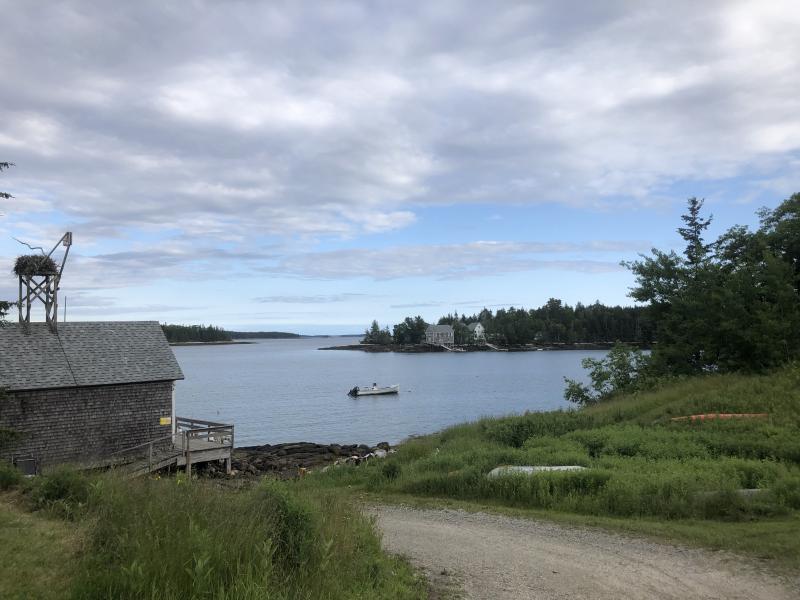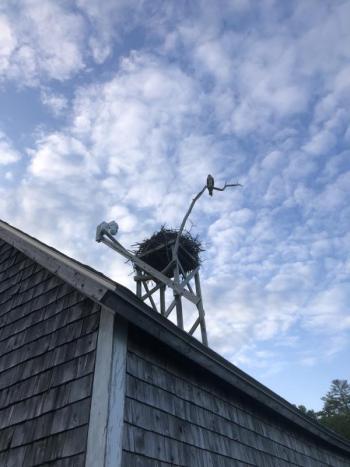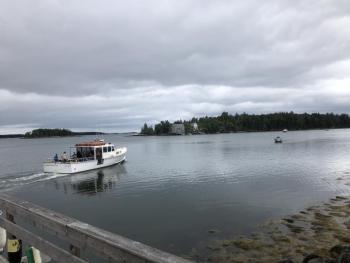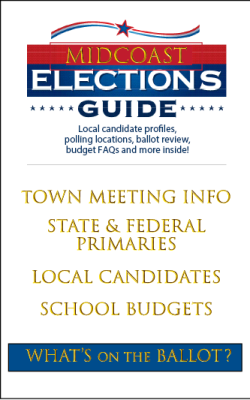A Maine Island Like No Other
Imagine a place on the Maine coast where your dinner conversation might range from talking with an Indigenous Guardian about the experience of living and working in a remote First Nation in northern Manitoba to chatting with a university professor from Pennsylvania about using iNaturalist to study insects and plants to musing with a young naturalist from the Midwest about the story of the rather tame wild turkey scratching under the bird feeder beside you at the outdoor seating area.
No, it’s not your average dinner party.
But believe it or not, such an exciting and diverse set of dinner guests is the norm at National Audubon’s Hog Island Camp in Bremen, Maine.
The camp has been operated by National Audubon on the northern tip of the one-and-half-mile long island that sits just 300 yards offshore about 5 miles east of Damariscotta. Most of the island is covered in a thick, dark green forest of tall, mature spruce and balsam fir trees. There are views of the rocky coastline-hemmed islands of Muscongus Bay in every direction. The water is studded with lobster buoys in a range of colors. At the northern end of Hog Island, there are a handful of rustic but rugged and well-maintained buildings that can host dozens of visitors for the 4-6 day sessions that take place from May through September.
The first week of June this year, as we write this, Hog Island is hosting a session called Puffin Explorations where attendees are learning more about seabirds and restoration of their populations. One focus of the session is the amazing success story of the restoration of Atlantic puffins to Eastern Egg Rock and how the lessons learned have now been applied to restoring seabird populations around the world. Of course, a boat trip out to Eastern Egg Rock, including landing on the island, to see the puffins, terns, and other birds up close is a highlight of the session.
Participants this week include Indigenous Guardians and other leaders from a number of First Nations in Manitoba, retired (or nearly so) professionals, and young twenty-somethings from across the U.S. The camp is also hosting entomology students from a Pennsylvania college (Immaculata University) who are working on their own insect research projects but share meals and other spare time with the camp session participants.
Along with National Audubon’s core operations and program staff, the camp is incredibly fortunate to have a team of volunteers provided through an independent group called the Friends of Hog Island. These volunteers assist with kitchen duties, clean-up and maintenance, and various other tasks to keep the camp running smoothly.
In between captivating lectures in the Fish House, laboratory explorations in Queen Mary building, and other activities, there is always ample time to sit and look out over the bay, the songs of northern parulas and black-throated green warblers ringing out while ruby-throated hummingbirds zip to and from the feeders on the porch and ospreys call as they bring food to the nest just across the way on the mainland. It’s a beautiful spot!
Maybe it’s time you came to visit. There are still openings in some of the sessions coming up in summer 2024 at: https://hogisland.audubon.org/
Jeffrey V. Wells, Ph.D., is a Fellow of the Cornell Lab of Ornithology and Vice President of Boreal Conservation for National Audubon. Dr. Wells is one of the nation's leading bird experts and conservation biologists. He is a coauthor of the seminal “Birds of Maine” book and author of the “Birder’s Conservation Handbook.” His grandfather, the late John Chase, was a columnist for the Boothbay Register for many years. Allison Childs Wells, formerly of the Cornell Lab of Ornithology, is a senior director at the Natural Resources Council of Maine, a nonprofit membership organization working statewide to protect the nature of Maine. Both are widely published natural history writers and are the authors of the popular books, “Maine’s Favorite Birds” (Tilbury House) and “Birds of Aruba, Bonaire, and Curaçao: A Site and Field Guide,” (Cornell University Press).
































